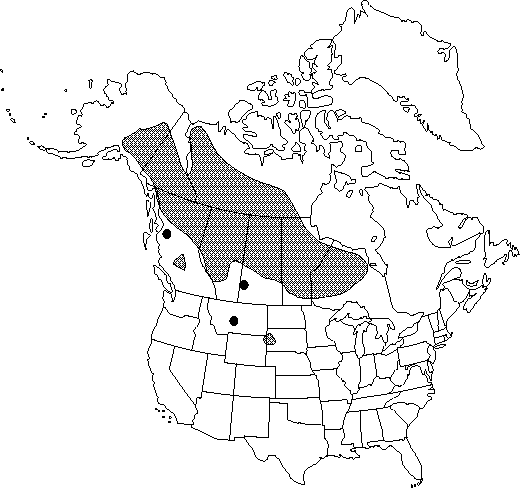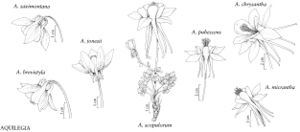Difference between revisions of "Aquilegia brevistyla"
Fl. Bor.-Amer. 1: 24. 1829.
FNA>Volume Importer |
imported>Volume Importer |
||
| (5 intermediate revisions by 2 users not shown) | |||
| Line 12: | Line 12: | ||
}}{{Treatment/ID/Special_status | }}{{Treatment/ID/Special_status | ||
|code=F | |code=F | ||
| − | |label= | + | |label=Illustrated |
}} | }} | ||
|basionyms= | |basionyms= | ||
| Line 40: | Line 40: | ||
-->{{#Taxon: | -->{{#Taxon: | ||
name=Aquilegia brevistyla | name=Aquilegia brevistyla | ||
| − | |||
|authority=Hooker | |authority=Hooker | ||
|rank=species | |rank=species | ||
| Line 54: | Line 53: | ||
|publication title=Fl. Bor.-Amer. | |publication title=Fl. Bor.-Amer. | ||
|publication year=1829 | |publication year=1829 | ||
| − | |special status=Endemic; | + | |special status=Endemic;Illustrated |
| − | |source xml=https:// | + | |source xml=https://bitbucket.org/aafc-mbb/fna-data-curation/src/2e0870ddd59836b60bcf96646a41e87ea5a5943a/coarse_grained_fna_xml/V3/V3_220.xml |
|genus=Aquilegia | |genus=Aquilegia | ||
|species=Aquilegia brevistyla | |species=Aquilegia brevistyla | ||
Latest revision as of 21:47, 5 November 2020
Stems 20-80 cm. Basal leaves 2×-ternately compound, 5-30 cm, much shorter than stems; leaflets green adaxially, to 12-44 mm, not viscid; primary petiolules 10-55 mm (leaflets not crowded), distally pilose or occasionally glabrous. Flowers nodding; sepals divergent from floral axis, blue, lanceolate or narrowly elliptic, 13-16 × 3-6 mm, apex acuminate or acute; petals: spurs blue, hooked, 5-10 mm, stout, evenly tapered from base, blades white or pale yellow, oblong, 7-10 × 3-6 mm; stamens 7-11 mm. Follicles 15-25 mm; beak 3-4 mm. 2n = 14, 16.
Phenology: Flowering summer (Jun–Aug).
Habitat: Open woods, meadows, shores, and rock outcrops
Elevation: 800-3500 m
Distribution

Alta., B.C., Man., N.W.T., Ont., Sask., Yukon, Alaska, Mont., S.Dak., Wyo.
Discussion
Aquilegia brevistyla has been reported from Minnesota. All Minnesota material seen, however, has been misidentified.
The chromosome number in this species needs to be reinvestigated.
Selected References
None.
